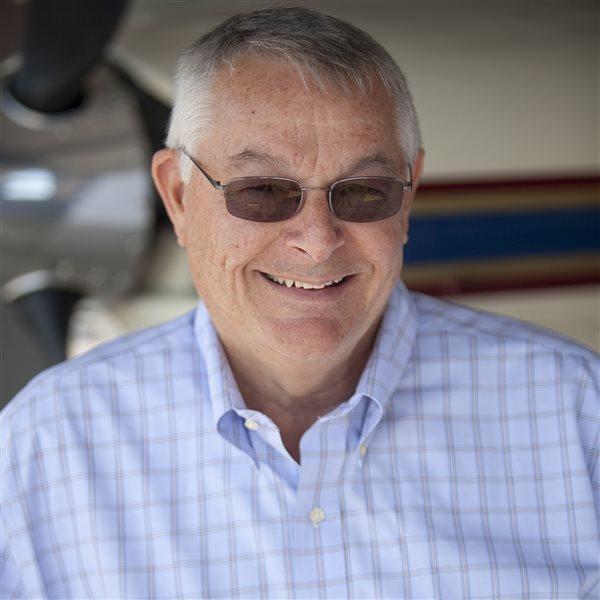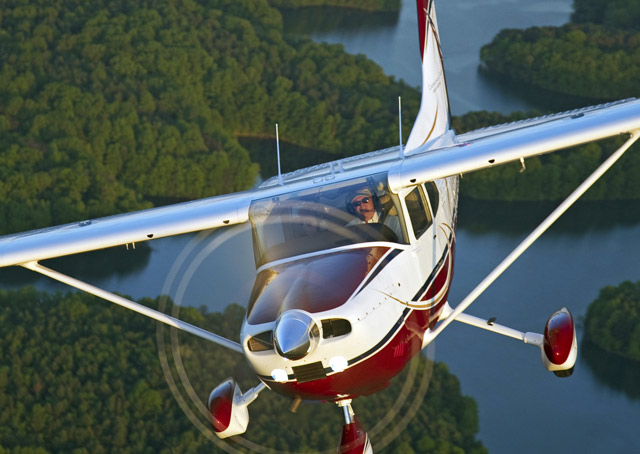Cessna 182 is a heavy lifter
The Cessna 180 tailwheel airplane got its nosewheel in 1956 and became the Cessna 182, with a reputation for hauling things. Then there’s the throaty roar of a 230- to 235-horsepower Continental or Lycoming engine (some say it’s a little too throaty, even with a noise-cancelling headset), and speed. The early ones will give you 130 to 135 knots while those built from the mid-1970s and newer will cruise at 141 or 142 knots true airspeed. Retractable-gear models that began in 1978 with a Lycoming engine claim another 10 knots, but now you are adding maintenance costs. Go easy with letting the family know about your purchase plans, lest they discover the new 182 price is nearly a half-million dollars before taxes and options. This review is limited to used 182s costing less than $100,000. AOPA Insurance has determined that most of the 182 owners contacting AOPA paid $60,000 for their 182 (the Vref value of a 1973 model).
The real world
John Frank, executive director of the Cessna Pilots Association, said the number one issue is corrosion because Cessna aircraft weren’t corrosion-proofed at the factory. Where and how the airplane was operated is another factor determining the presence of corrosion. A second problem is the buildup over time of resistance in the electrical system caused by contaminated connections, especially in older aircraft. Often the solution is as simple as cleaning every hard-to-reach electrical connection in the airplane. Operating costs for the 182 are hard to figure, given variances such as hangar costs, but $200 an hour is a good number, Frank said. That includes engine overhaul, avionics upgrades and repair, and all the usual costs to include insurance, hangar or tiedown fees, engine overhauls, and inspections. The 182 does haul a lot, but Cessna gave up service ceiling to increase payload. The first year of production 182s had a service ceiling of 20,000 feet and a useful load of less than 1,000 pounds. Newer 182s have a useful load of 1,200 pounds but a service ceiling of 14,900 feet.
Email [email protected]
Who to contact
Cessna Pilots Association, 3409 Corsair Circle, Santa Maria, California, 93455; telephone 805-934-0493; www.cessna.org; Email through the contact page of the website.
Vref value
Vref, the AOPA partner offering aircraft value estimates, suggests a base price for the Cessna 182 Skylane of $34,000 for the 1956 model; $53,000 for a 1970 Skylane; a 1979 turbocharged, retractable-gear Skylane for $83,000 ($78,000 if not turbocharged and with fixed gear); and a 1982 Skylane for $93,000.
Recent advertised prices
Listed in Trade-A-Plane at the time this was written were 110 Skylane aircraft meeting our criteria of an asking price that is less than $100,000, ranging from $26,000 for a nonturbocharged, nonretractable 1963 model to $95,000 for a 1978 model. The lowest- priced turbocharged plus retractable-gear model was a 1979 Skylane for $70,000.
Insurance costs
AOPA Insurance Services estimates an average-cost Skylane flown by a low-time pilot will cost $1,500 to $1,800 per year to insure.
How many in the fleet?
AIRPAC PlaneBase shows an FAA-registered fleet of 14,383 Cessna Skylane aircraft of all models.
Financing
AOPA Finance estimates $251 per month at 6.5 percent for a $34,000 loan on the older Skylanes, and $625 per month for a 5-percent loan on a $93,000 Cessna Skylane. Both require 15 percent down and a term of 15 years.
Airworthiness directives
Nothing serious.
Biggest plus
Heavy lifter.
Biggest minus
Previous owners may have put too much weight on the nosewheel, wrinkling the firewall.
Things to watch out for
If the aircraft still has flat fuel caps, there may be water in the fuel. If the firewall has wrinkles, the owner may have landed with weight on the nosewheel.
What else to consider
Piper Dakota




